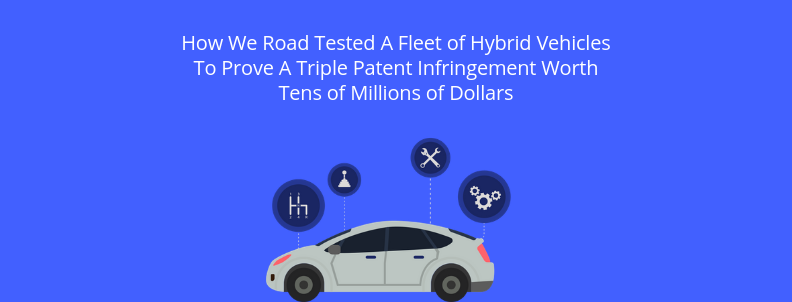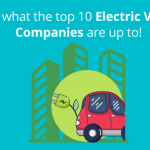A few years ago, as part of an ongoing relationship with a major U.S. defense contractor, we were asked to run a monetization analysis on a large patent portfolio, with an eye toward identifying patents likely to produce revenue. The contractor has a huge, active R&D department, and at the time, their portfolio contained somewhere in the neighborhood of 10,000 patents—so many that it had become difficult for them to keep track of what, exactly, they owned, and how valuable the technology underlying all that IP was likely to be.
Many companies with big patent portfolios often find themselves in the same predicament—ill-equipped to evaluate their own IP. Among other things, the reasons typically have to do with:
- Technological specialization
- The evolution of technology over time
- Sheer volume
And as in the case of the defense contractor, they frequently need guidance on how to monetize their portfolio: identifying its most valuable patents and generating revenue via sale, licensing fees, or legal action.
Using an in-house, machine learning-enabled process that we’ve described at length here, we quickly identified a promising cluster in the defense contractor’s portfolio: a set of roughly 75 patents pertaining to hybrid vehicles. From there, our analysts applied a painstaking method of manual evaluation to further whittle down the set to three especially tantalizing patents.
But it’s not enough to simply own compelling IP. In order to help the defense contractor monetize these patents, we would have to show that the technologies they described were being used by others, ideally by major companies in the context of popular, mass-produced products. If we could do that—demonstrate conclusively that our client’s patents were being infringed upon—they could proceed in a variety of ways, depending on their needs and preferences.
They might sue the infringer for damages, or approach them to request licensing fees. Alternatively, they could sell the patents to another company, which for one reason or another might be in a better position to pursue licensing or legal action. As a third option, they could simply keep the intelligence on file for future reference—perhaps to contribute to a defensive patent strategy, designed to shield them from legal action somewhere down the line.
Any of these options would offer significant economic advantages. But the kind of hard evidence that we needed to prove our case is hard to come by. Simply observing that there were some hybrid cars on the road that appeared to be operating along the lines described in our client’s patents wouldn’t be enough.
In most cases, companies accused of patent infringement will fight tooth-and-nail to avoid paying damages or licensing fees—which can easily run to tens of millions of dollars. To give the value of the patents, we would need incontrovertible proof that one company or more was using exactly the technology that the patents described.
Car manufacturers, of course, have nothing to gain by making the ins and outs of the tech they’re using easily accessible, lest someone follow their lead—or accuse them of patent infringement.
In this article, we’ll explain how we proved our case through an investigation that took us on an unlikely route—from deep web searches conducted at our desks in India to rural New England. We’ll explain how we experimented with a fleet of rented hybrid vehicles—often in the middle of the night—performing a battery of road tests and then carefully analyzing the data that we collected. In the end, we’ll show how we helped our client monetize all three of the patents, resulting in a multimillion-dollar sale.
Note: If you want to learn more about how GreyB can assist you with monetizing your company’s patents, you can contact us here.
How We Identified the Most Likely Candidate Patents for Monetization
When it comes to evaluating a large patent portfolio, missing an excellent patent can have much greater consequences than identifying a good one. So in our initial manual analysis, we give ourselves a generous margin of error, including many more patents than we’ll ultimately focus on—in this case, as indicated above, a set of 75. Being sure that we don’t discard a strong patent is a matter of knowing what standards to apply—and applying them carefully. During this stage of the process, we give each patent a careful reading and run digital searches with a handful of questions in mind:
- What does the patent pertain to (e.g. steering, braking)?
- How much information is generally available about technology? Does it appear that it’s already in use on the market?
- How complex is the technology described?
- How active is this area of the market?
At present, governments around the world are releasing new regulations for how vehicles are powered and publishing updated efficiency standards. As a result, technology pertaining to the way hybrid vehicles store, distribute, and recoup power has tremendous market potential. Indeed, one would be hard-pressed to name an area with more favorable conditions, and by further refining our analysis, we zeroed in on three patents that were right in the sweet spot.
Used together, the technologies that the patents described would allow hybrid vehicles to toggle between electric and internal combustion energy sources while optimizing efficiency and maximizing battery life. Put another way, the patents seemed to cover a significant portion of many hybrid vehicles’ core functionality:
- Patent A outlined a method of modulating the power supplied by an electric battery to the motor of a hybrid vehicle based on the state of the battery’s charge; as the battery’s charge declined, it would provide less power, ceding responsibility for powering the motor to the vehicle’s internal combustion engine.
- Patent B described a process by which, depending on the state of an electric battery’s charge, applying the brake would recharge the battery; as the battery approached full charge, this regenerative braking mechanism would provide less and less energy to the battery, thus preserving its lifespan.
- Patent C diagrammed a process that would give preference to regenerative braking, where available, as the source of power to recharge the electric battery in a hybrid vehicle, while relying on the vehicle’s auxiliary engine to charge the battery where energy derived from regenerative braking was not available.
How We Used Detailed Infringement Analysis to Identify the Prime Patent Infringement Suspects
The three patents we were focused on all dated to 1997, and we identified five modern hybrid car models, made by Chevrolet, Ford, and Toyota, respectively, that especially raised our suspicions of patent infringement.
Based largely on diagrams that we turned up in our initial rounds of research, they seemed likely to be using technological concepts covered by one or more of the defense contractors’ patents. But these diagrams were vague, at best, and to begin searching for the definitive evidence we needed, we performed what we call a detailed infringement analysis.
Like most any IP research project, the process begins with a scouring, fine-grained digital search—in this case for product manuals, videos, articles, discussion forums, and more. Any source that might provide details about the way a product works can come into play. It’s an essential step. But it’s rarely if ever, enough to prove a full overlap between a patent and another company’s product—the gold standard in this kind of patent monetization project.
Over the years, through trial and error, we’ve learned that coming up with that kind of evidence demands what we think of an investigative approach—a willingness and ability to follow hard-to-decipher trails of clues, venturing out, away from our screens, to do hands-on research.
For our defense contractor client, this proved true. While our search of the relevant literature surfaced additional documents that bolstered our suspicions about the hybrid cars in question, the picture remained hazy. We didn’t have the evidence that would allow our client to monetize their patents.
And as we suggested above, there were complicating factors. As with an increasing number of high-tech products, the publicly available literature about hybrid vehicles provided virtually no meaningful information about the inner workings of the machine.
Today’s drivers don’t care about how their motor provides power to their wheels; they’re highly unlikely to ever tinker with their car themselves. What they want to know is how fast it will go, and how much fuel is going to cost. This trend only encourages a manufacturers’ tendency to be cagey about how their hybrid vehicles actually work, and the upshot is that it’s more or less impossible to figure out what’s going on inside a hybrid car on the basis of printed material.
Some IP researchers would have stopped there, but although the specifics of this assignment were bothy knotty and highly specialized, we’d seen obstacles of this kind before. For our clients, turning back at this stage is never an option. And in our experience, successful patent monetization analyses almost always requires further investigation, in the form of some hands-on experience with the relevant products. To prove patent infringement in this case, we knew, we were going to have to do some driving.
How We Pulled Back the Curtain on Hybrid Vehicles’ Interior Functionality with a Combination of Road Testing and Software
The hybrid vehicles that we had identified as prime patent infringement suspects were available only in the U.S. So our next step was to have a couple of our Boston-based analysts hunt down a specimen of each model so that we could road test them.
The cars were popular. At the time, the best selling among them—a Toyota Prius—had sold more than 3 million units worldwide. But that popularity hadn’t much trickled down to the rental market — we couldn’t find them available for rent. And although our client had plenty of resources, they didn’t want to purchase five cars just for the sake of testing. Simply getting our hands on each one of our target vehicles took some finagling, and once we had, we ran into yet another problem.
To extract the data we needed—data concerning how each hybrid vehicle was toggling between electric and internal combustion energy sources, using regenerative braking and gas power to charge electric batteries—we would need to plug a laptop into a dashboard interface. Each vehicle had a plug-in resembling a USB port, which is where we would insert a laptop cable. By using a combination of the vehicle’s native software and our own digital tools, we would download massive quantities of data as we drove.
That was all well and good, a way of working around the paltry info about the vehicles’ functionality available in the literature. Unfortunately, we found, Ford’s onboard software had not been updated for so long that its outputs were effectively unusable for our purposes. To extract the diagnostic information we needed for our analyses would have required extensive modification of and/or hacking of the software, and rather than send us further into the weeds, our client, the defense contractor, had us zero in on the remaining three hybrid models: two Toyotas and a Chevy.
Road Tests
Our clients’ patents described how a hybrid vehicle’s distribution and modulation of power supply would adjust in order to maximize efficiency and optimize performance in a variety of driving conditions. Among other things, that meant we needed to test the vehicles under a host of circumstances. Simply showing data that demonstrated that a vehicle behaved as described by one or more of the three patents in specific, isolated instances, would not be enough to prove our case.
Rather, we would have to perform an extensive series of tests on each car, mixing and matching a handful of key variables:
- The state of the electric battery’s charge (e.g. low, strong, full)
- Driving conditions (e.g. high acceleration, braking, cruising)
- Terrain (e.g. uphill, downhill, level)
As anyone who has ever driven in Boston knows, there is perhaps no American city less ideal for road tests. And for the kind of driving we had to do, we were going to need plenty of open space, as well as variations in elevation and as little traffic as possible.
Eventually, we settled on an isolated, rural spot about an hour’s drive from the city. After some trial and error, we determined that ~1 AM was the best time of day for road tests. About a month later, after hours of driving around in the dark, with their laptops plugged into their dashboards, our analysts had acquired the data they needed to determine whether the Toyota and Chevy hybrids were infringing on our client’s patents.
How We Analyzed and Interpreted Our Road Test Data to Prove Multiple Instances of Patent Infringement
Extracting data is one thing, parsing it another. Once our analysts in Boston had completed their road tests, they sent their findings back to our offices in India for analysis. Despite its enormous volume, it required us to conduct supplementary calculations in order to arrive at some of the key values we needed to make our determinations.

With those values in hand, we plotted them across a series of graphs and tables.
Among other things, we demonstrated how power provided to an electric battery varied according to the battery’s state of charge:

How power provided to the battery by regenerative braking also varied according to the battery’s state of charge:

And how power provided by the auxiliary engine varied according to the power available from regenerative braking:

Where the literature available via online search was vague, the data reflected in our graphical analyses was unerringly specific—and extremely encouraging for our defense contractor client. Our findings showed that both Toyota models were infringing on all three of the patents that we had zeroed-in on in our client’s portfolio:

Meanwhile, the Chevy hybrid we’d tested was infringing on one of the same three patents—Patent C, the one concerning how a hybrid system toggles between power supplied by regenerative braking and an auxiliary engine. With that intelligence in their files, the defense contractor was in an ideal position to monetize all three patents in whatever way best suited their overall IP strategy.
If you want to learn more about how GreyB can assist you with monetizing your company’s patents, you can contact us here.









